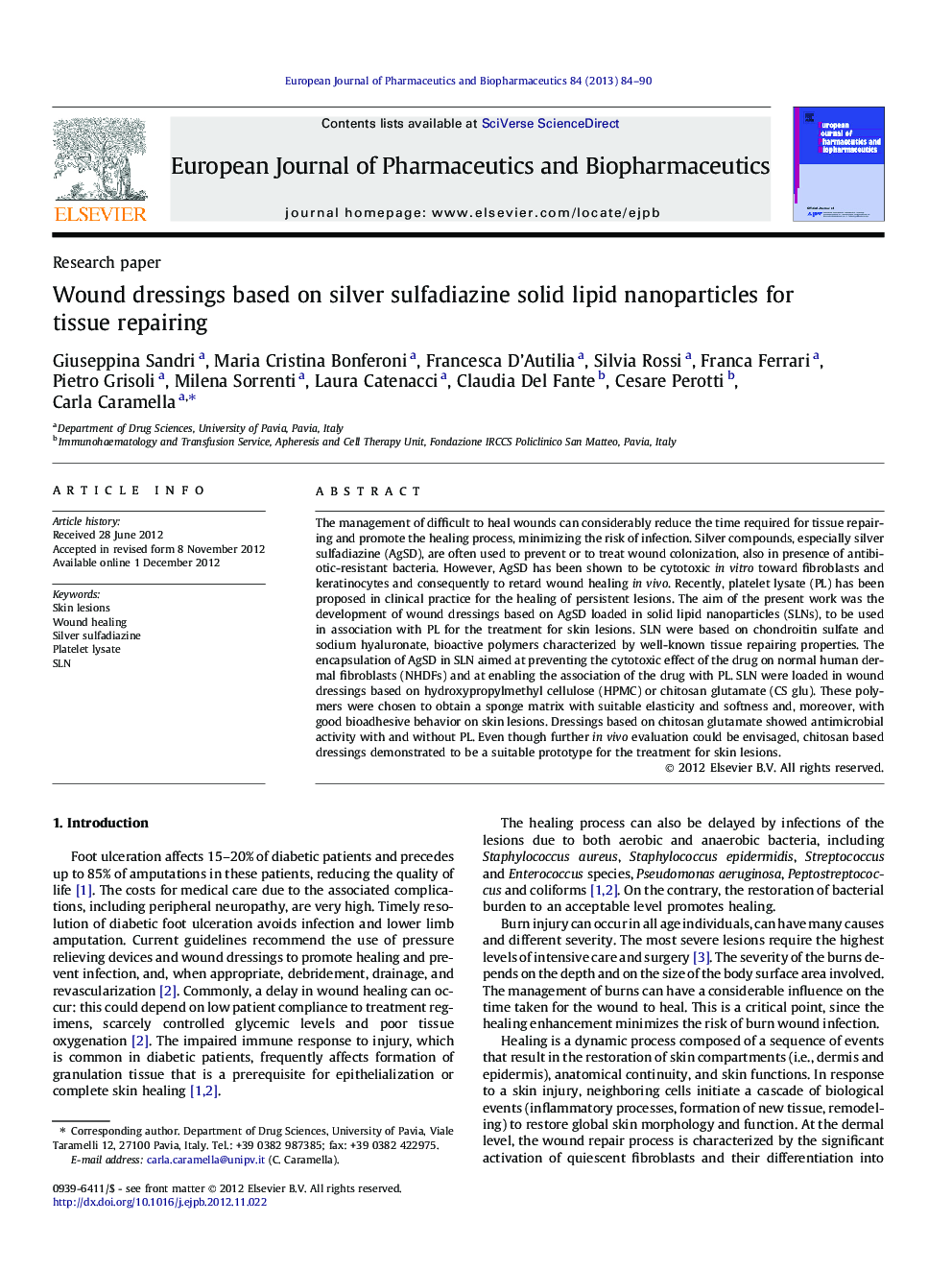| کد مقاله | کد نشریه | سال انتشار | مقاله انگلیسی | نسخه تمام متن |
|---|---|---|---|---|
| 2083914 | 1545352 | 2013 | 7 صفحه PDF | دانلود رایگان |

The management of difficult to heal wounds can considerably reduce the time required for tissue repairing and promote the healing process, minimizing the risk of infection. Silver compounds, especially silver sulfadiazine (AgSD), are often used to prevent or to treat wound colonization, also in presence of antibiotic-resistant bacteria. However, AgSD has been shown to be cytotoxic in vitro toward fibroblasts and keratinocytes and consequently to retard wound healing in vivo. Recently, platelet lysate (PL) has been proposed in clinical practice for the healing of persistent lesions. The aim of the present work was the development of wound dressings based on AgSD loaded in solid lipid nanoparticles (SLNs), to be used in association with PL for the treatment for skin lesions. SLN were based on chondroitin sulfate and sodium hyaluronate, bioactive polymers characterized by well-known tissue repairing properties. The encapsulation of AgSD in SLN aimed at preventing the cytotoxic effect of the drug on normal human dermal fibroblasts (NHDFs) and at enabling the association of the drug with PL. SLN were loaded in wound dressings based on hydroxypropylmethyl cellulose (HPMC) or chitosan glutamate (CS glu). These polymers were chosen to obtain a sponge matrix with suitable elasticity and softness and, moreover, with good bioadhesive behavior on skin lesions. Dressings based on chitosan glutamate showed antimicrobial activity with and without PL. Even though further in vivo evaluation could be envisaged, chitosan based dressings demonstrated to be a suitable prototype for the treatment for skin lesions.
SLN based on chondroitin sulfate and sodium hyaluronate and loaded with AgSD were embedded in a polymeric matrix of chitosan glutamate or HPMC, to obtain wound dressings with suitable elasticity and softness and, moreover, with good bioadhesive behavior on skin lesions. The encapsulation of AgSD in SLN allowed to prevent the cytotoxic effect of the drug on normal human dermal fibroblasts, in vitro, and the association of the drug with platelet lysate. Dressings based on chitosan glutamate showed antimicrobial activity with and without PL demonstrating to be a suitable prototype for the treatment for skin lesions.Figure optionsDownload high-quality image (141 K)Download as PowerPoint slide
Journal: European Journal of Pharmaceutics and Biopharmaceutics - Volume 84, Issue 1, May 2013, Pages 84–90